Close at hand
Close at hand
CAMAIORE
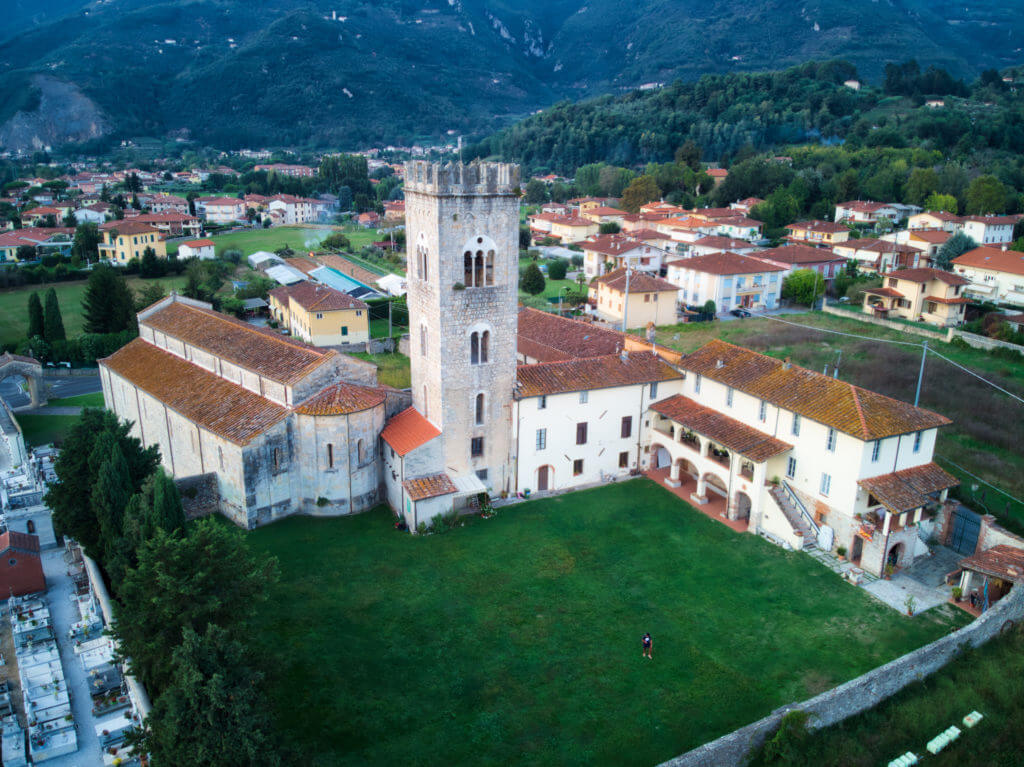
The Camaiore territory stretches from the heights of the Apuan Alps, with the Monte Prana, Monte Matanna, and Monte Gabberi peaks, to the hill country that slopes down to the coastal plain and the beach. The plain is well known as a growing area for vegetables, grapes, and olives – and flowers. The first mention of Camaiore dates to Roman times: this campus maior hosted an important Roman military outpost. Camaiore’s renown grew in the Midde Ages due to its position along the Via Francigena pilgrim’s route. The territory is home to numerous rural religious buildings; the Pieve di Santo Stefano e San Giovanni Battista baptismal church and the Benedictine Abbey, are both of considerable historic interest and worthy of special mention. Every year, the abbey is the starting point for the Corpus Domini procession down Camaiore’s main street, covered for the occasion with ‘carpets’ of colored sawdust depicting images on religious themes. Not far from the center, toward the sea, you’ll find Villa Le Pianore, known as the birthplace of Princess Zita of Bourbon-Parma, the last empress of Austria. On the sea, Lido di Camaiore is a famous beach resort and the venue for numerous art shows, musical events and theatrical productions.
VIAREGGIO
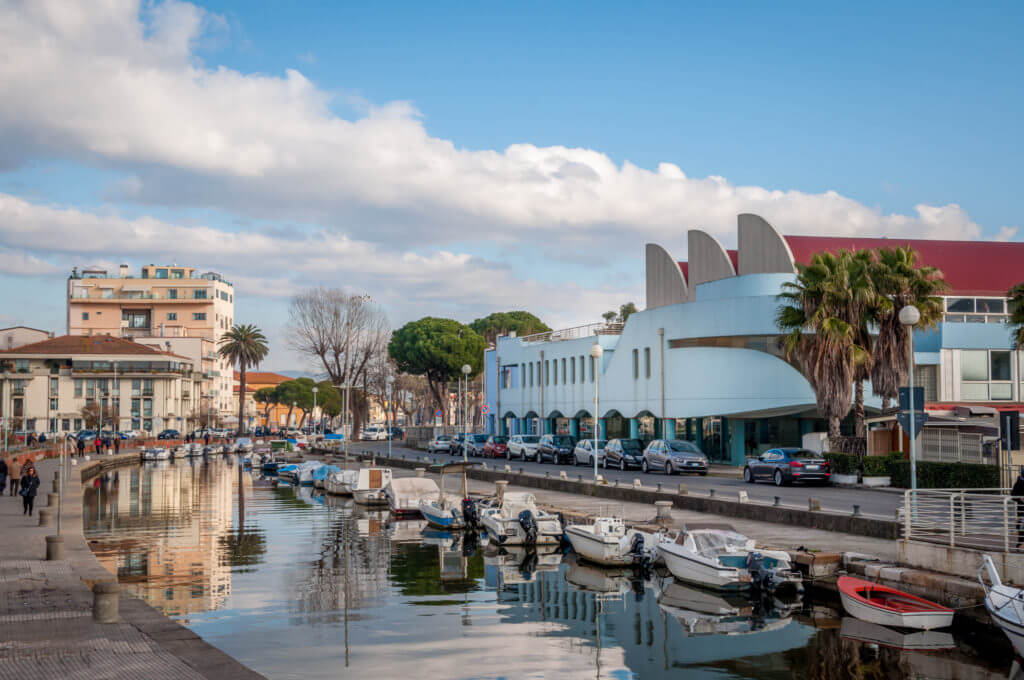
Viareggio’s city-center seaside boulevards make up the route of the world-famous Carnival parade (www.viareggio.ilcarnevale.com) of gigantic papier-mâché floats built in the nearby Cittadella del Carnevale. Numerous buildings in exquisite Art Nouveau style still line the parade route; not far inland you’ll find the city’s Villa Paolina and GAMC (www.gamc.it) museums, with their permanent exhibitions of art and archeology; and Villa Argentina, with its precious and colorful glazed ceramic decorative elements in Italian Liberty style, by Galileo Chini. Whether you’re exploring on foot or by bike, stop in one of the extensive pinewoods north or south of the city center where picnic tables and playground equipment for children await you for a pleasant respite. Stroll through Viareggio’s port and along the wharves to admire beautiful vessels and gorgeous luxury yachts: the shipbuilding industry is one of the city’s excellences. Southward, the territory is unusual, phasing into an enormous wetland area framing Lake Massaciuccoli, inspiration for composer Giacomo Puccini who stayed here often, on the water at Torre del Lago, and here composed several of his most famous operas. In the summer, the Gran Teatro all’Aperto Giacomo Puccini (www.puccinifestival.it) dedicates an entire festival to the maestro’s works. Close by is the Macchia Lucchese protected area, lying within the much larger Migliarino, San Rossore, Massaciuccoli Regional Park (www.parcosanrossore.org): a coastal “green lung” of carefully safeguarded, uncontaminated nature stretching to Pisa and Livorno.
MASSAROSA
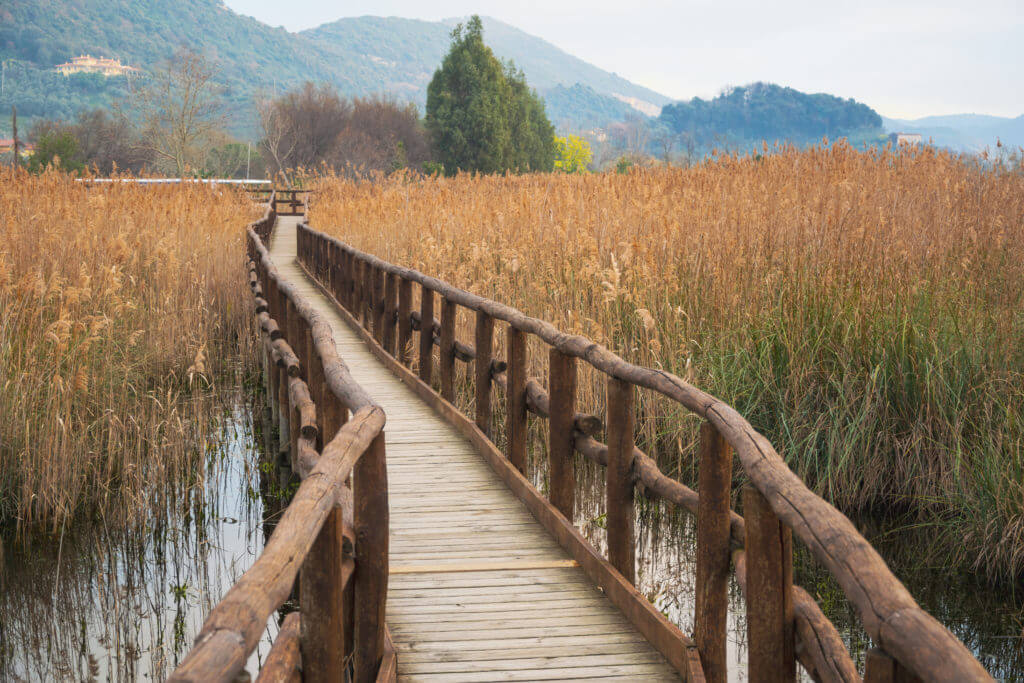
A visit to the inland Lake Massaciuccoli might start from the Roman villa and its baths complex and the small archaeological museum at the site (www.massaciuccoliromana.org) in the municipality of Massarosa. The Oasi LIPU Massaciuccoli (www.oasilipumassaciuccoli.org) bird and wildlife oasis is the entrance to the park and the point of departure for excursions on the lake in small boats and along its shoreline on special boardwalks equipped with birdwatching hides. Of a different sort of interest, and not far from the center of Massarosa, the Pieve a Elici church is the venue for a summer program of sacred and classical music concerts. The small country churches in the hill-country hamlets of Bargecchia and Corsanico also offer interesting musical fare.
LUCCA
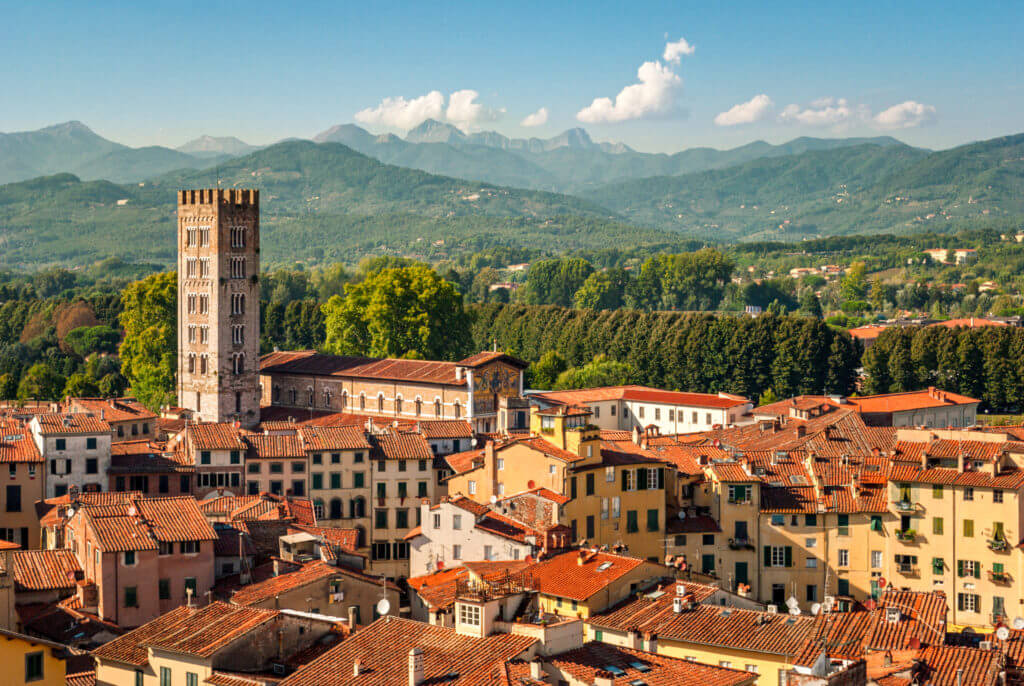
25 km from Forte dei Marmi
Supra-municipal Information Office: Viale Carducci, 10 · Viareggio
phone: +39 0584 962233
Information Office: Piazzale Verdi · Lucca
phone: +39 0583 583150 · email: turismolucca@metrosrl.it
Known as the “city of a hundred churches,” surrounded by mighty, tree-topped walls – today a panoramic pedestrian promenade. The provincial capital’s tourist offer is extensive and varied, with cultural events, music, and theatre in the city center. Lucca is also the birthplace of composer Giacomo Puccini and the home of the Puccini house-museum.
ABETONE
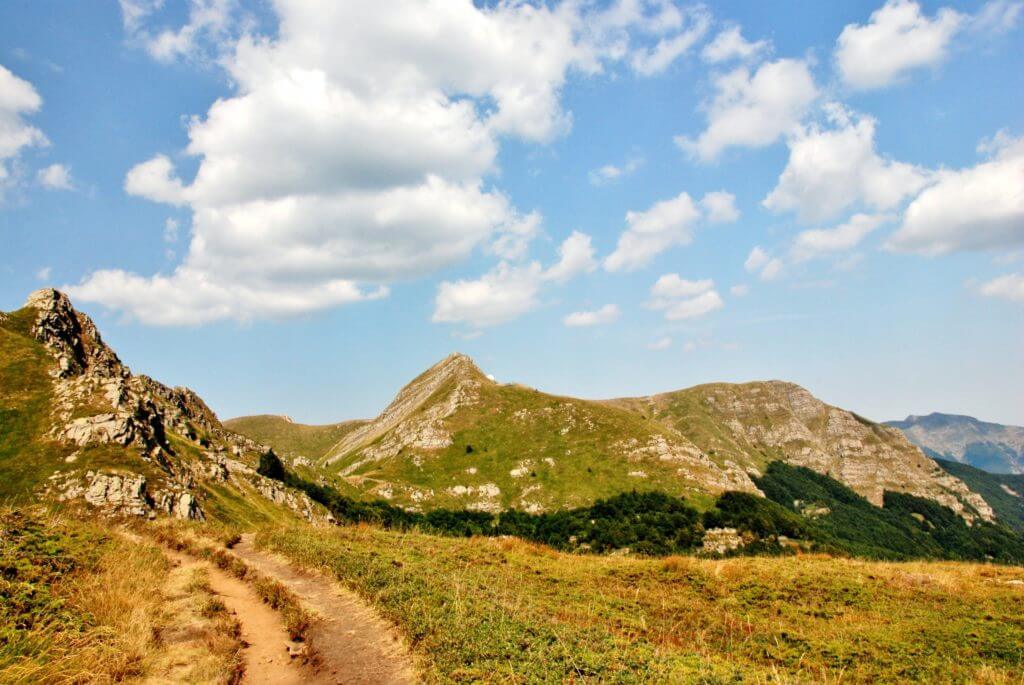
phone: +39 0573 60285 · email: info@abetonelacasetta.it
Abetone Information Office, phone: +39 0573 60231 · email: turismo.abetone@comune.pistoia.it
Cutigliano Information Office, phone: +39 0573 68029 · email: turismo.cutigliano@comune.pistoia.it
A Tuscan ski resort with upwards of 50 kilometers of trails. Even in summer, Abetone offers countless opportunities for excursions, hikes and trekking, and organized sports activities. And though it’s located in the province of Pistoia, Abetone holds a corner of Forte dei Marmi: you might choose to stay at the Casetta dell’Abetone, owned by the Comune di Forte dei Marmi and managed by Sci Club Le Marmotte.
THE APUAN ALPS
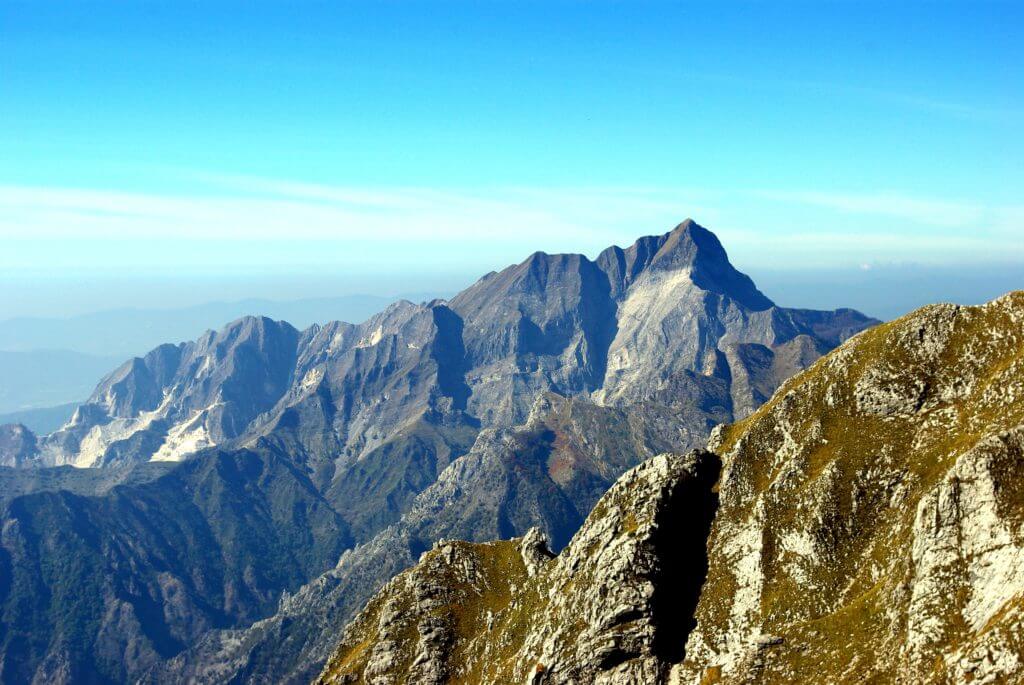
Overtopping the coastal plain, the majestic peaks of the Apuan Alps mountain chain offer incredible panoramic views. And the Apuan Alps Regional Park is crisscrossed by kilometers of trails through an enormous variety of landscapes, botanical rarities, and sites of historic, naturalistic, and geological interest. Among these are Italy’s deepest abyss, the Antro del Corchia (www.corchiapark.it) in Stazzema, and Grotta del Vento caves complex (www.grottadelvento.com) in Garfagnana. You won’t want to miss Monte Forato, a huge, arching natural rock bridge that unites two separate peaks; or the Marmitte dei Giganti giants’ cauldrons (potholes), deep cylindrical depressions drilled over the centuries by gravel transported by the streams that descend from Monte Sumbra. The nearness of the Apuan massif to the sea makes for intriguing view from the beach, a natural “landscape painting” of rare beauty and seemingly impossible perspective. Finally, the mountains protect the coastal area from the cold north winds and in conjunction with the mitigating influence of the sea ensure a mild climate year-round.









